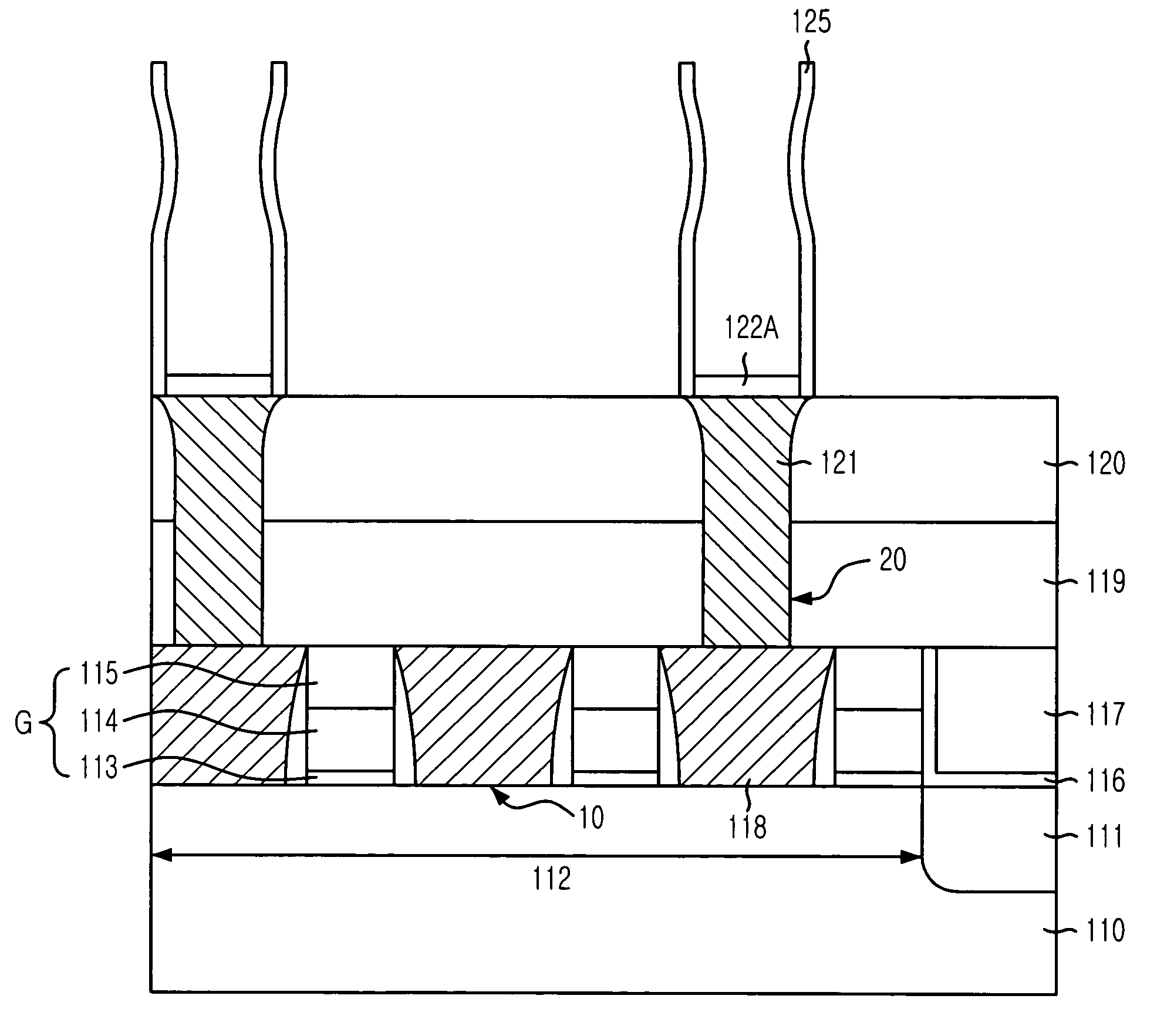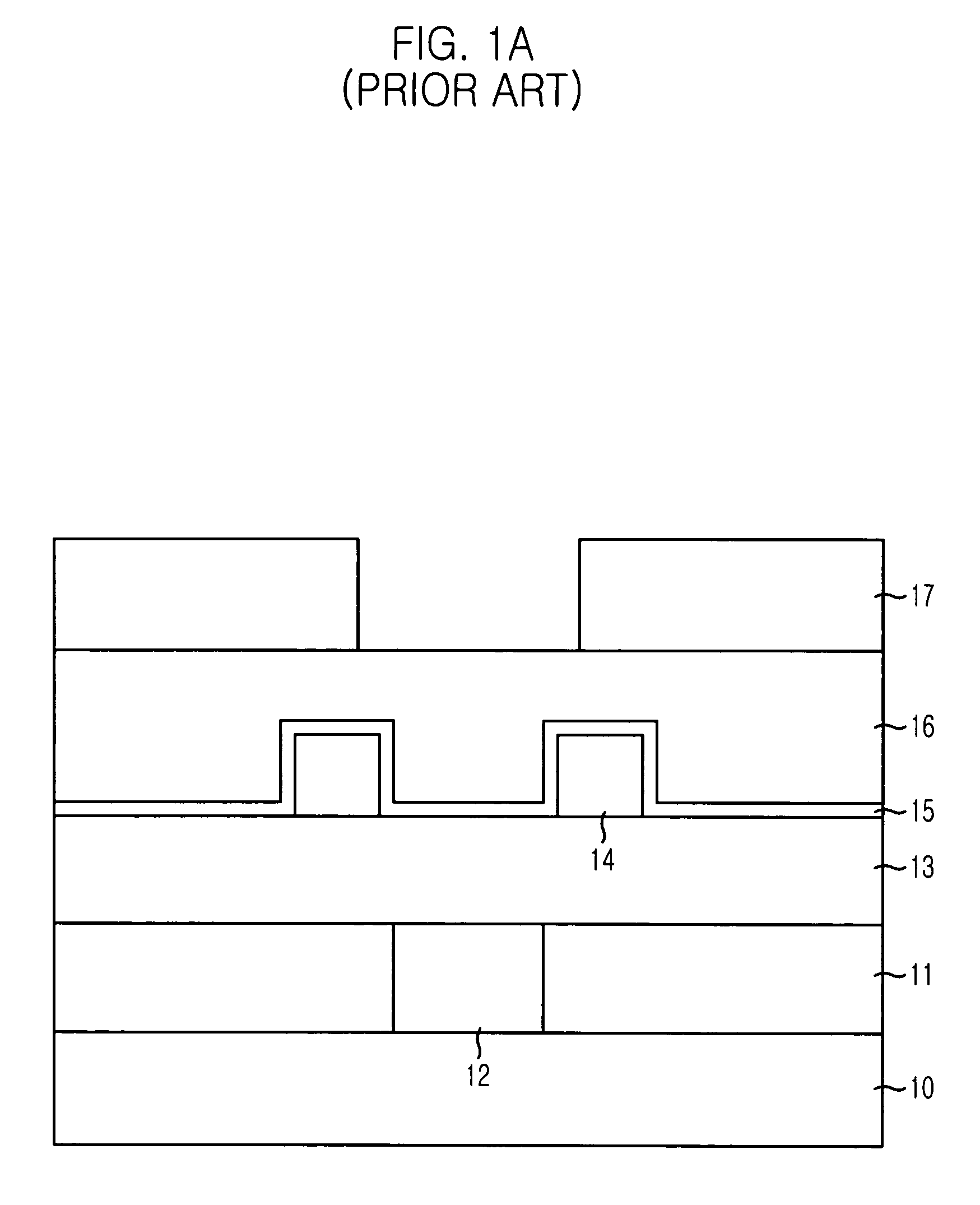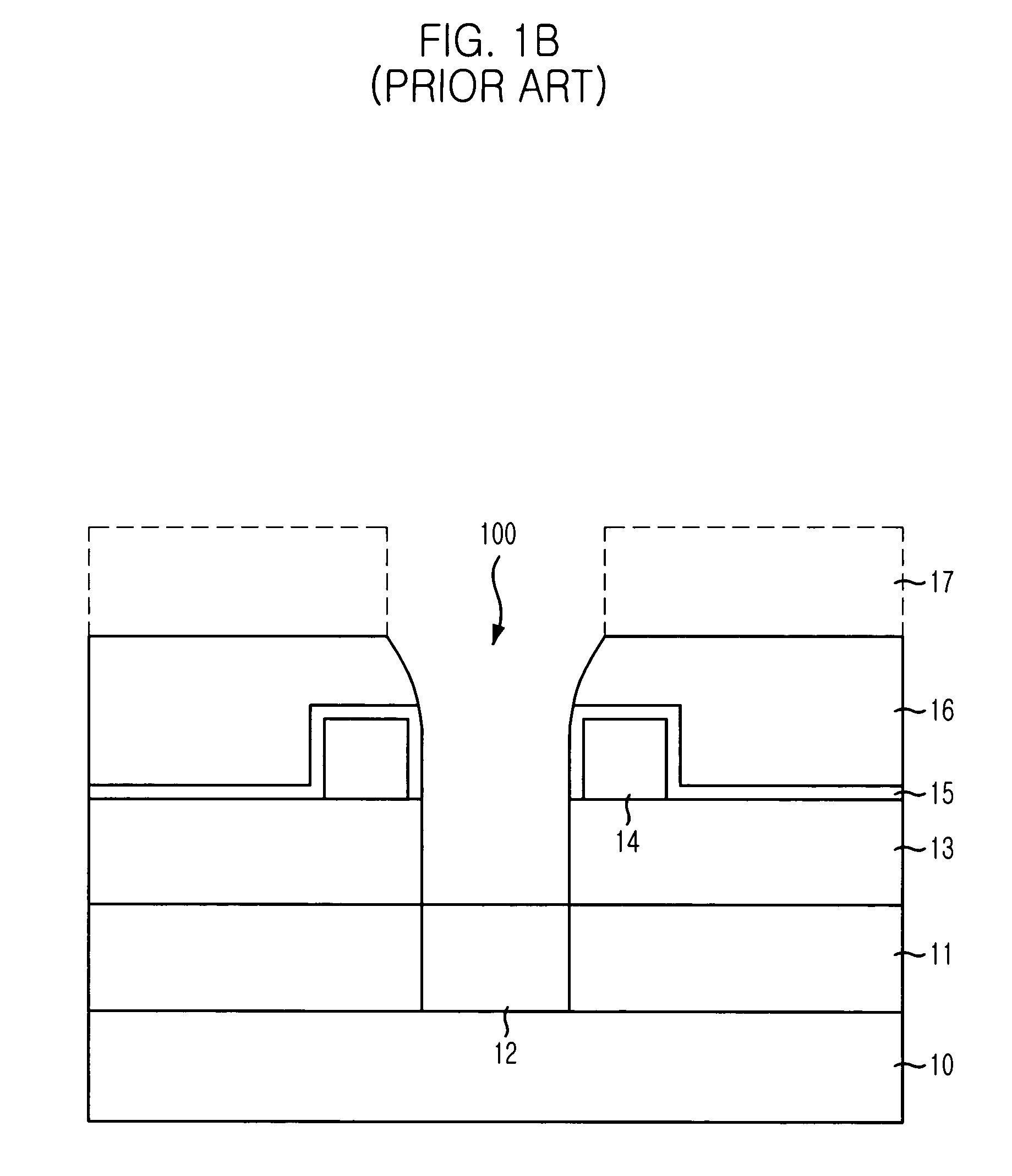Method for fabricating semiconductor device
a semiconductor and device technology, applied in the direction of semiconductor devices, capacitors, electrical equipment, etc., can solve the problems of zigzag arrangement of lower electrodes, electric short between lower electrodes, and additional cost, so as to prevent electric short, increase the effective capacitor area, and ensure the capacitance of capacitors
- Summary
- Abstract
- Description
- Claims
- Application Information
AI Technical Summary
Benefits of technology
Problems solved by technology
Method used
Image
Examples
Embodiment Construction
[0095]A method for fabricating a semiconductor device in accordance with a preferred embodiment of the present invention will be described in detail with reference to the accompanying drawings.
[0096]FIG. 11 is a top view showing a semiconductor memory device having a structure of one transistor-one capacitor (1T1C) in accordance with a preferred embodiment of the present invention.
[0097]As shown, a plurality of gate electrodes, for instance, first to third word lines WL1, WL2 and WL3, are arranged in one direction. A first bit line BL1 and a second bit line BL2 are arranged in a crossing direction to the first to the third word lines WL1 to WL3. Also, there is a landing plug contact LPC1. Herein, the landing plug contact LPC1 is made of polysilicon. Also, although not illustrated, the landing plug contact LPC1 is connected to a substrate through a contact hole formed by using a T-type mask pattern exposing a predetermined portion of the substrate, e.g., an impurity diffusion region....
PUM
 Login to View More
Login to View More Abstract
Description
Claims
Application Information
 Login to View More
Login to View More - R&D
- Intellectual Property
- Life Sciences
- Materials
- Tech Scout
- Unparalleled Data Quality
- Higher Quality Content
- 60% Fewer Hallucinations
Browse by: Latest US Patents, China's latest patents, Technical Efficacy Thesaurus, Application Domain, Technology Topic, Popular Technical Reports.
© 2025 PatSnap. All rights reserved.Legal|Privacy policy|Modern Slavery Act Transparency Statement|Sitemap|About US| Contact US: help@patsnap.com



